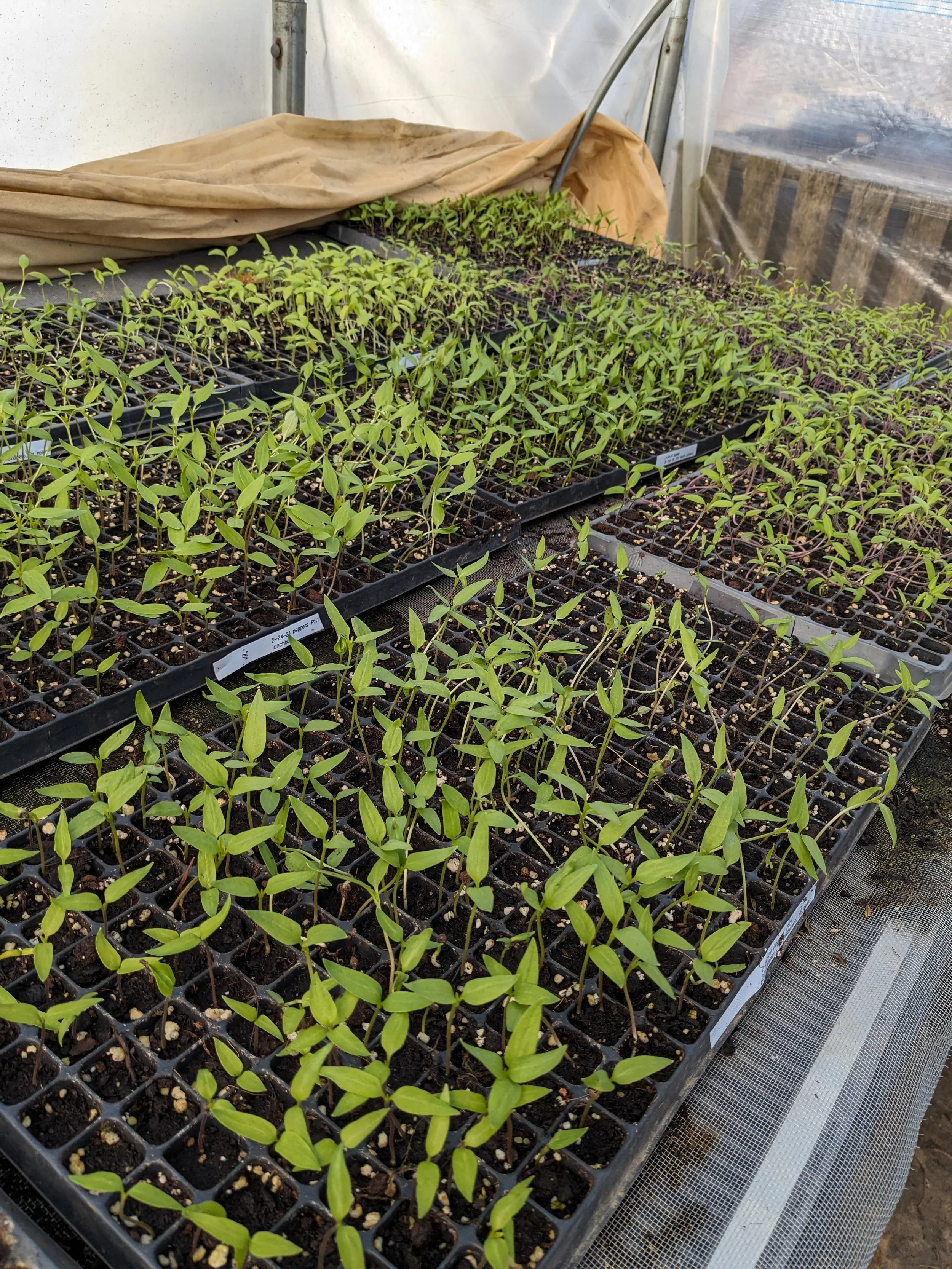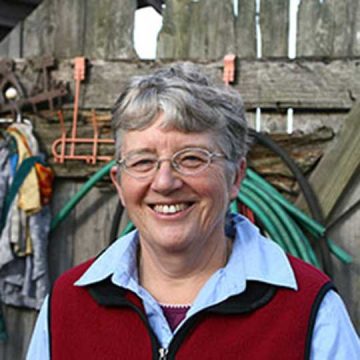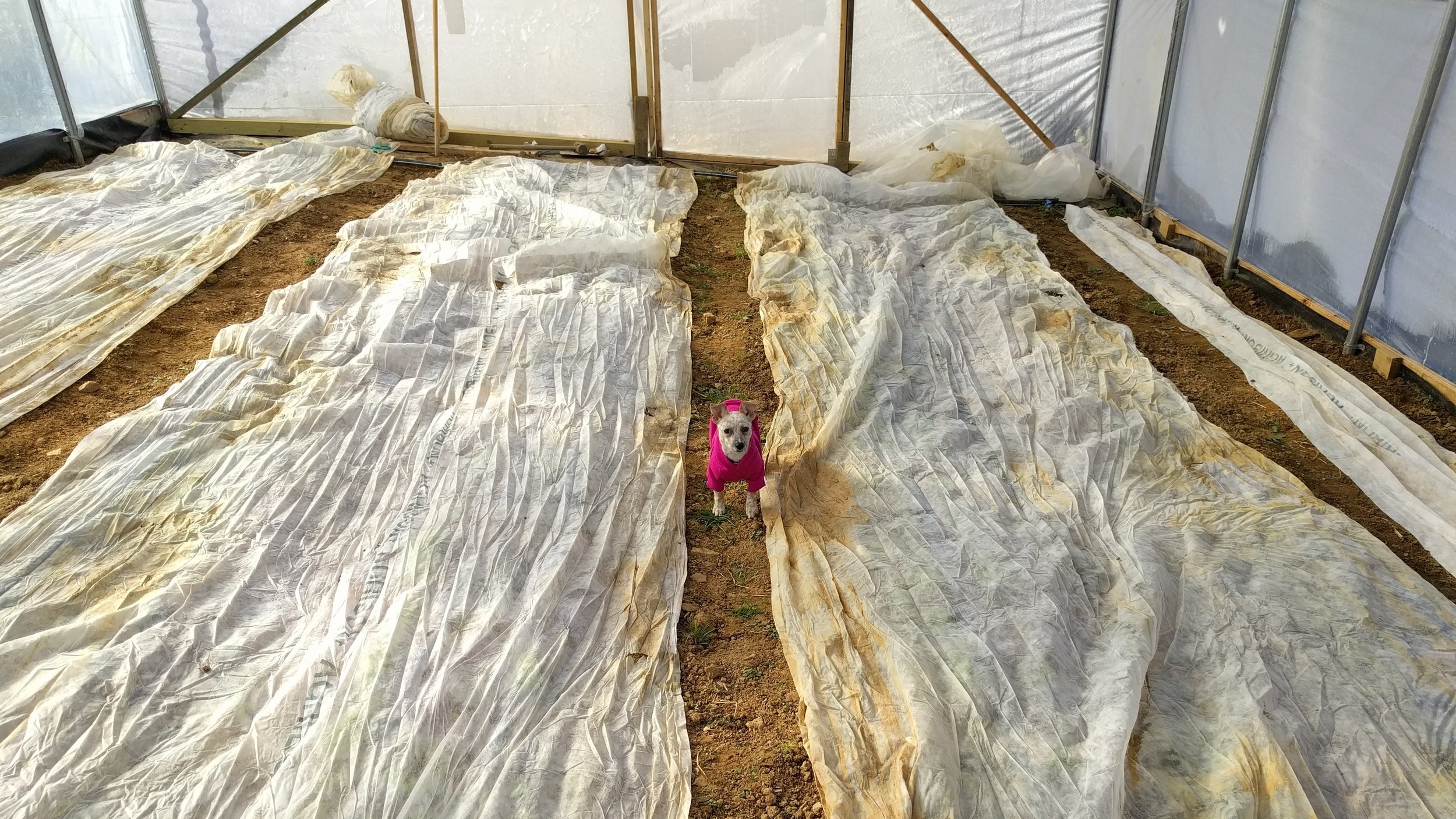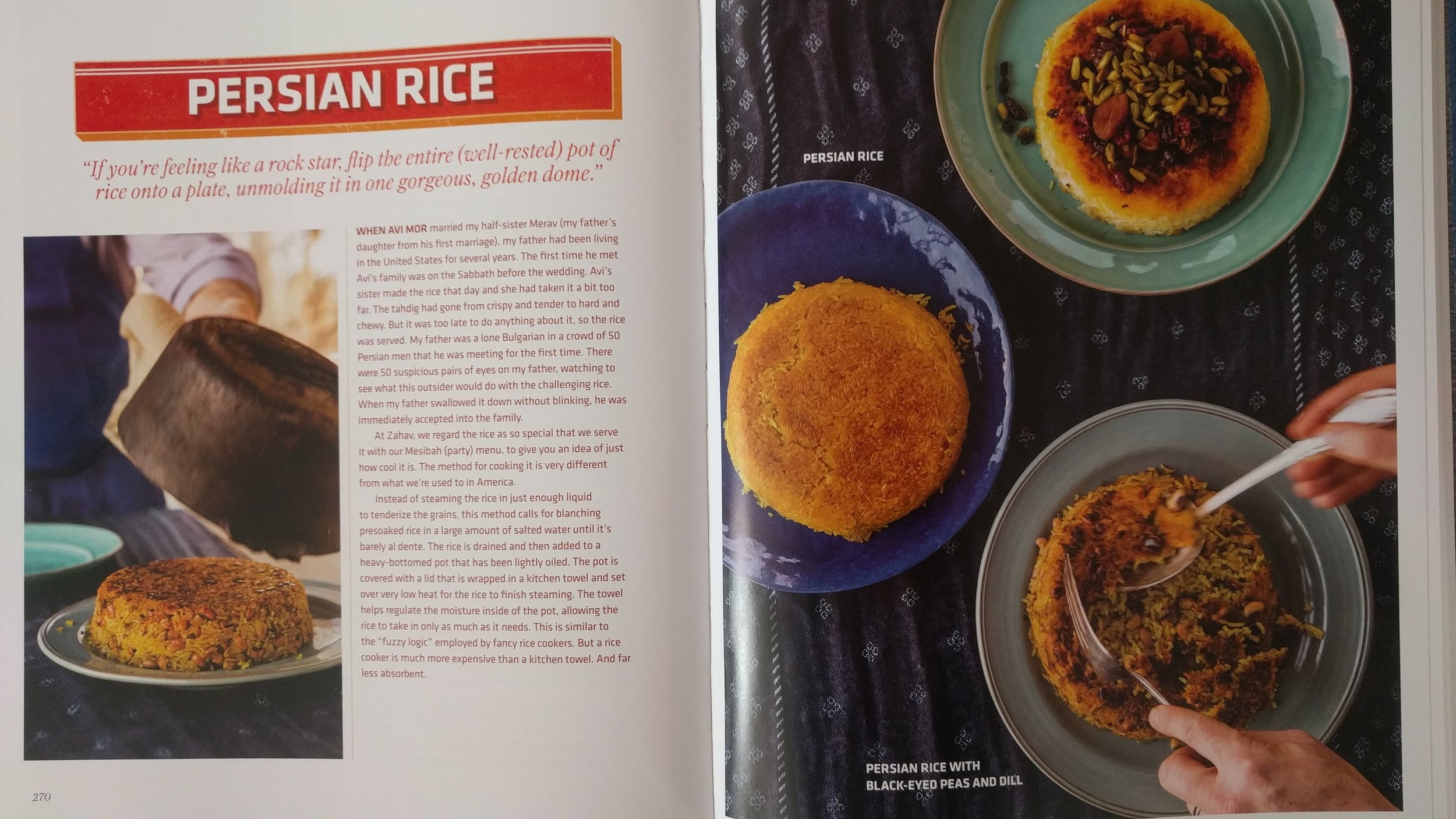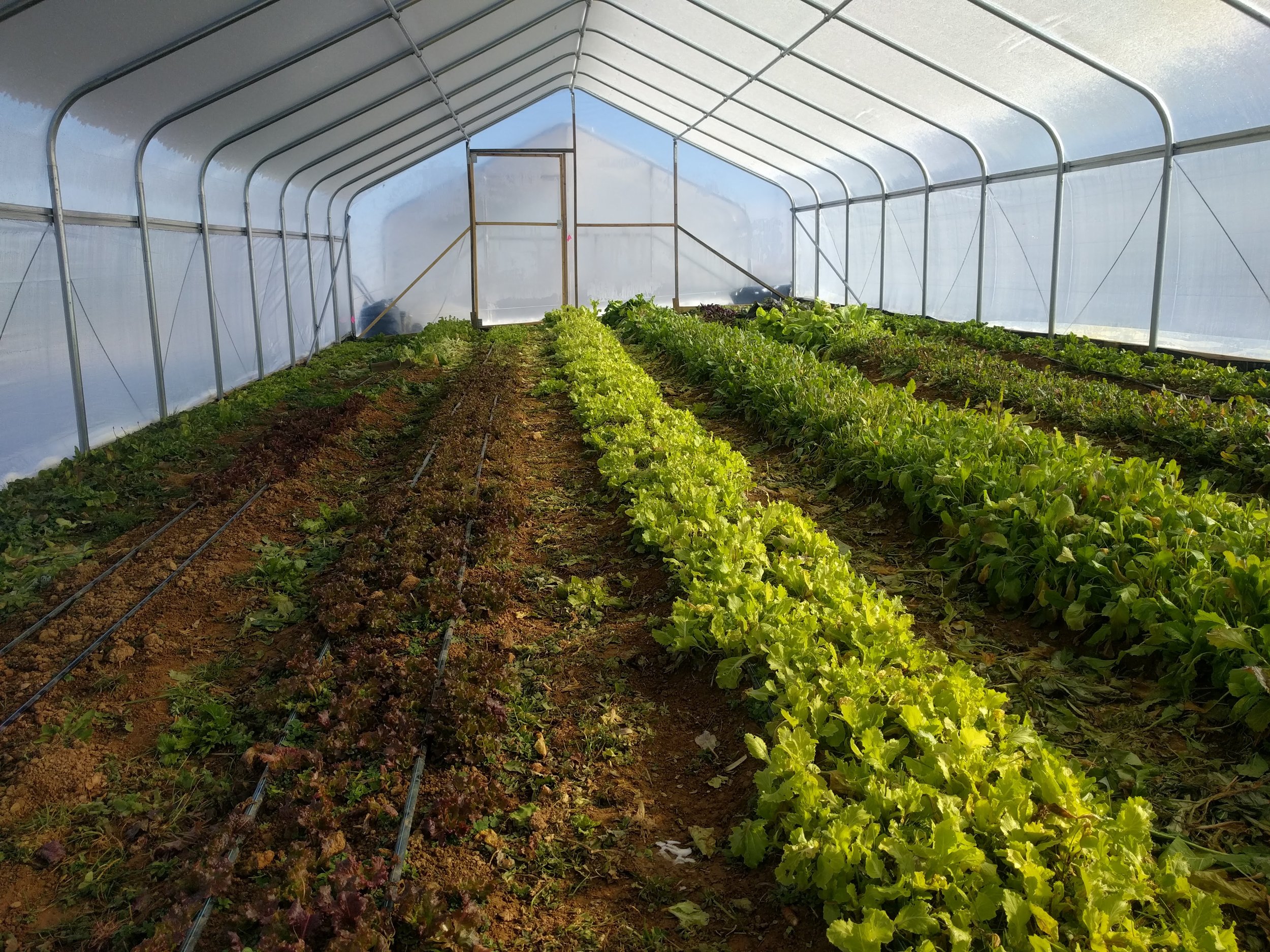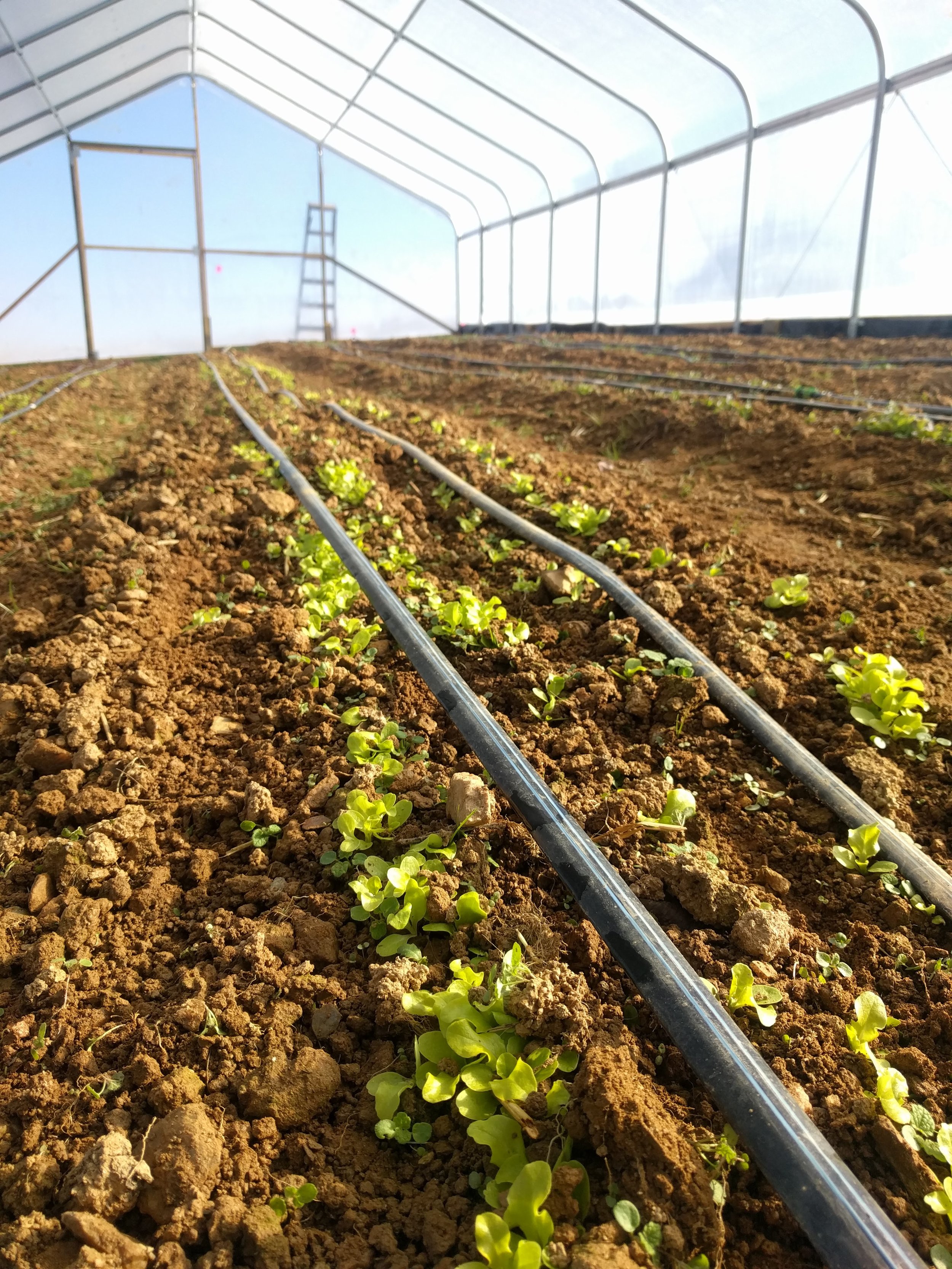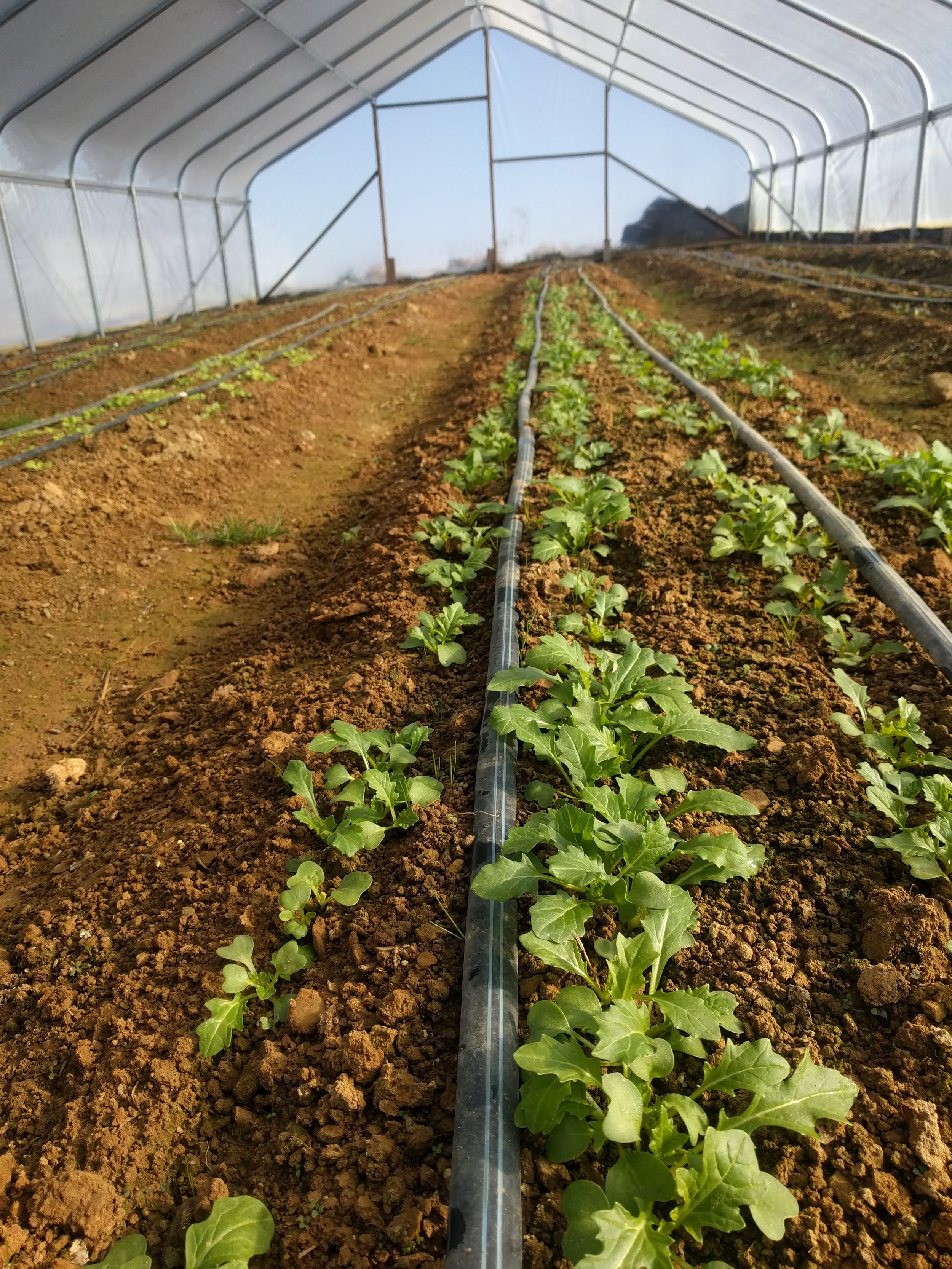New light in the packing shed!
Goodbyes and Hellos
We had to say goodbye to some of our favorite winter crops this week: potatoes and winter radishes. It's hard to believe that crops that we started the winter season with such huge quantities all got eaten up! We still have a few butternut squash, but the winter squash is almost gone as well. Goodbye, winter staple foods - thank you for nourishing us for so long!
We also said goodbye to some of our row cover, landscape fabric, and garlic foliage in this massive wind storm. Our sturdy tunnels fared beautifully though, which we are incredibly grateful for. Many of our fellow farmer friends suffered far greater damage, and we feel very lucky that nothing worse happened (despite cursing a lot while chasing down scattered trash yesterday at sunset.) It was sad to see our first little plants of spring defoliated after their surrounding landscape fabric got lifted into the air, but hopefully it will recover. It's already too busy to mourn this crop for too long - spring is afoot!
Now it's time for hellos! In the next couple of weeks we'll have some awesome new additions to CSA offerings such as arugula, bunched mustard greens, new Asian greens, cilantro, and spring radishes. So stay tuned!
We've also said hello to a lot of infrastructure upgrades around the farm! One pictured above is simply a hanging light for our packing shed. Now we don't have to do everything by headlamp after dark!
Pre-carnage garlic
What We're Eating
Savory Sweet Potato Pie with Poppy Seed Cheddar Crust
This recipe from Mollie Katzen's Enchanted Broccoli Forest was brought to us by friend and CSA member Kerith!
Details below:
For the crust:
6 Tbs cold butter, cut into small pieces
1 1/2 Cups Flour (up to 1/4 can be whole wheat, I used about 1/4 cup and it worked well)
~4 Tbs cold water, milk, or buttermilk (I used milk)
1/2 Cup grated sharp cheddar
2 Tbsp poppy seeds
- Use a pastry cutter, two forks, or a food processor to cut together the butter and flour until they make a uniform mixture resembling coarse cornmeal.
- Stir in the cheese and poppy seeds.
- While stirring, or as the food processor runs, add the liquid a little at a time, until the dough holds together. The amount can vary according to humidity.
- Form the dough into a ball and wrap and chill, or roll out immediately. Transfer to a 9 or 10-inch pie pan and form a crust. Refrigerate or freeze.
For the filling:
2 lbs sweet potatoes or yams
1 Tbsp butter (optional)
1/2 tsp cinnamon
3 oranges- peeled, seeded, and cut into small pieces
3/4 tsp salt
1 Tbsp honey or brown sugar
1/2 cup firm yogurt
(topping ingredients:)
1/2 cup fine bread crumbs
1 Tbsp brown sugar
1/2 tsp cinnamon
- Preheat oven to 375 degrees Fahrenheit.
- Peel the sweet potatoes and cut into chunks, and boil or steam until soft. Drain, transfer to a bowl, and mash.
- Add remaining (non-topping) ingredients and mix well. Transfer to the crust.
- Combine the topping ingredients in a small bowl, mix, and sprinkle evenly over the pie. Bake for 45 minutes, turning front-to-back midway through. Cover the topping with foil if it's browning too quickly. Serve hot, warm, or at room temperature.
Our plates are looking a lot like this lately, too! Enjoying the bounty of salad, sweet potatoes, and of course, steak.
Reserve your Summer CSA by March 31st!
We hope you'll put down your $50 deposit to reserve your main season CSA share today! While the deadline is March 31st, the sooner you place your deposit or purchase your share in full, the easier it is for us to plan our season. We've also added two new pick up locations that you're welcome to switch to once the main season starts in May: Charles Village and Ednor Gardens! We're also working to secure a pick up site in or near Federal Hill.
To complete your summer sign up on Small Farm Central, click here. In the green box at the top of the page, select 2018 season. Select "2018" on the next page. Next, under "Main Season CSA," select "Re-enroll" (it's the last option listed.) Let us know if you have any questions or issues.
Until next week, keep on chewing (aka eating delicious produce!)
- Joanna and Bryan


